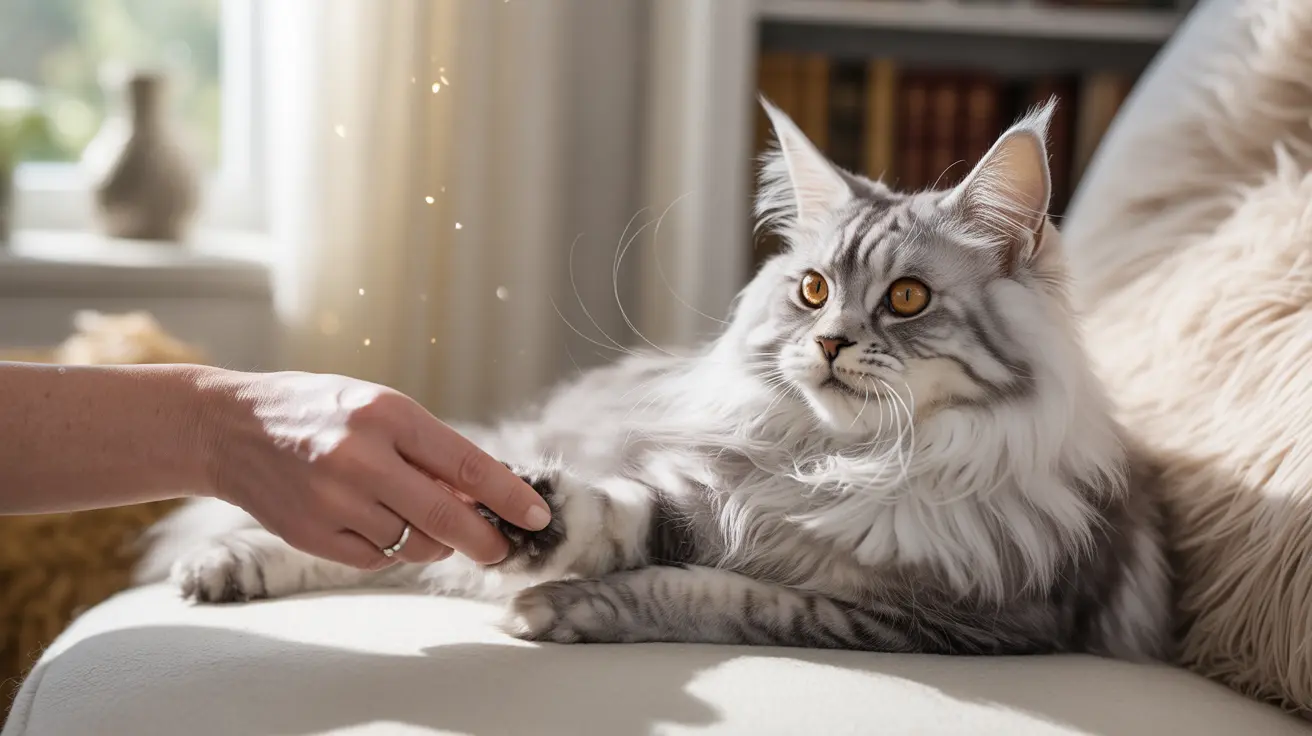What is Tetralogy of Fallot in Cats?
Tetralogy of Fallot (TOF) represents one of the most complex congenital heart defects that can affect cats. This rare but serious condition consists of four distinct heart abnormalities that develop before birth, significantly impacting a cat's ability to circulate oxygen-rich blood throughout their body.
This condition accounts for approximately 6% of all congenital heart defects in cats, making it the most common cause of cyanotic heart disease in felines, though it remains relatively rare compared to other heart conditions. Understanding this condition is crucial for cat owners and veterinary professionals alike, as early detection and proper management can significantly impact an affected cat's quality of life.
The Four Key Defects
Ventricular Septal Defect
At the heart of tetralogy of Fallot lies a hole between the right and left ventricles of the heart. This defect allows oxygen-poor blood to mix with oxygen-rich blood, compromising the overall oxygen content delivered to the body's tissues.
Pulmonic Stenosis
The second component involves a narrowing at or near the pulmonary valve, which restricts blood flow from the heart to the lungs. This obstruction makes it difficult for the heart to pump sufficient blood to the lungs for oxygenation.
Overriding Aorta
In cats with TOF, the aorta is positioned directly above the ventricular septal defect rather than its normal position. This displacement allows the aorta to receive blood from both ventricles, further contributing to the mixing of oxygen-poor and oxygen-rich blood.
Right Ventricular Hypertrophy
The fourth abnormality involves the thickening of the right ventricle's muscular wall. This occurs as the heart works harder to pump blood through the narrowed pulmonary valve, leading to muscle enlargement over time.
Clinical Signs and Diagnosis
Cats affected by tetralogy of Fallot typically show signs early in life, often by six months of age. The most notable symptoms include:
- Bluish or purple tinge to gums and tongue (cyanosis)
- Poor growth and development
- Exercise intolerance
- Breathing difficulties
- Weakness and lethargy
- Reduced appetite
Veterinarians diagnose TOF through a combination of physical examination, chest X-rays, echocardiography, and specialized cardiac tests. The presence of a heart murmur in a young kitten, combined with cyanosis, often provides the first indication of this condition.
Treatment Options and Management
While there is no cure for tetralogy of Fallot in cats, several management strategies can help improve quality of life:
- Strict exercise restriction to prevent strain on the heart
- Medical management with beta-blockers and other cardiac medications
- Regular monitoring of blood oxygen levels
- Periodic blood removal (phlebotomy) if needed to manage increased red blood cell count
- In rare cases, surgical intervention may be considered, though this is uncommonly performed in cats
Long-term Prognosis and Care
The prognosis for cats with tetralogy of Fallot varies significantly depending on the severity of the defects and the effectiveness of management strategies. While many affected cats may not survive beyond their first year without intervention, some cats with milder forms and appropriate medical management have lived longer, though they require careful monitoring and ongoing veterinary care.
Frequently Asked Questions
What are the common signs and symptoms of tetralogy of Fallot in kittens and cats?
The most common signs include bluish gums and tongue (cyanosis), poor growth, exercise intolerance, breathing difficulties, weakness, and reduced appetite. These symptoms typically appear within the first six months of life.
How is tetralogy of Fallot diagnosed in cats, and what tests should my vet perform?
Diagnosis typically involves physical examination, chest X-rays, echocardiography, electrocardiogram (ECG), and blood tests. The gold standard for diagnosis is echocardiography, which can visualize all four cardiac defects.
What treatment options are available for cats diagnosed with tetralogy of Fallot?
Treatment options include medical management with medications like beta-blockers, exercise restriction, periodic blood removal if needed, and in rare cases, surgical intervention. The specific treatment plan depends on the severity of the condition and individual patient factors.
How does tetralogy of Fallot affect the lifespan and quality of life of affected cats?
Without intervention, the prognosis is generally poor, with many cats not surviving beyond their first year. However, with appropriate medical management, some cats with milder forms can live longer, though they require ongoing veterinary care and monitoring.
Can tetralogy of Fallot be prevented or inherited, and should affected cats be bred?
While tetralogy of Fallot cannot be prevented, it is believed to have a genetic component. Therefore, cats with this condition should not be bred to avoid passing the condition to offspring. Currently, there is no genetic testing available for this condition in cats.






